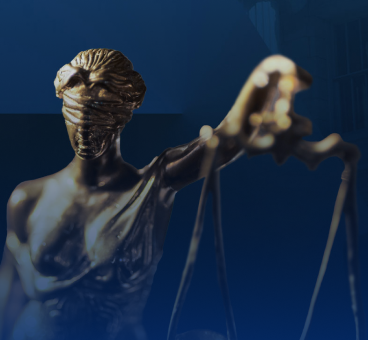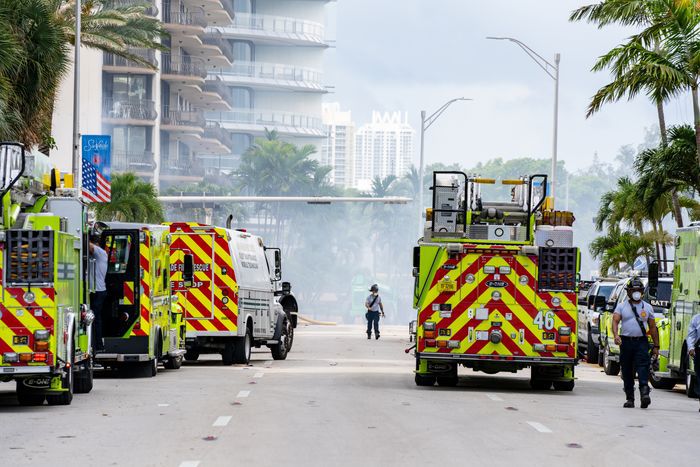
The Surfside building collapse in Florida left the community, government officials, civil engineers, and inspectors in shock. Champlain Towers South, a 12-story condominium building in southern Florida near Miami Beach, is only 40 years old, yet suffered a partial collapse on June 23, 2021. At present, 242 residents are now accounted for, 98 of which have been confirmed dead. The search party officially called off their efforts around July 7, concluding that such an event, called a “pancake” collapse, likely left no survivors.
Many engineers and building inspectors were left astounded by the event, and several theories have since been put forward to account for the tragedy. Below, we discuss some of these theories and what they might entail in terms of legal responsibility. If you or a loved one have experienced property damage or personal injury due to structural damage, contact GED Lawyers to discuss your case.
Structural Integrity of Buildings
Many engineers and building inspectors were left astounded by the event, and several theories have since been put forward to account for the tragedy. Below, we discuss some of these theories and what they might entail in terms of legal responsibility.
Theory 1: Spalling (Structural Concrete Deterioration)
The term spalling refers to damage in concrete surfaces that, when left unattended, can lead to serious vulnerabilities in a structure’s integrity. In 2018, a consultant brought on by Champlain Towers South’s condo board examined the building and found significant cases of spalling in the building’s structural concrete, the worst of which was in the subterranean parking garage. Significant spalling in a parking garage column may have brought the building down. At the same time, saltwater intrusion due to the recent rise in sea levels may have seeped into the columns, further weakening the steel rebar that strengthens the columns.
Theory 2: Impacts From a Nearby Construction Site
Construction on Eighty Seven Park, a luxury tower comprising 18 stories and 71 units, located across the street from Champlain Towers South, reportedly shook the condos in the years prior to the collapse. A condo board member wrote to Surfside officials to report the vibrations and expressed worry about the building’s structural integrity. Officials familiar with the area say that this theory may not have much validity since all new buildings in the area are engineered to withstand hurricanes.
Theory 3: Sinking Foundation Due to Rising Sea Levels
Like many other parts of Florida, the ground under Surfside is slowly sinking. Champlain Towers specifically is sinking much faster than the surrounding buildings at a rate of 2 millimeters every year. Uneven sinking may have contributed to the building’s collapse.
Theory 4: Structural Flaws in the Building’s Construction
Champlain Towers was constructed during the building boom of the 1980s. Officials are now wondering whether construction was rushed, under-regulated, and cheaply done. This theory arose after inspectors noticed the building contained fewer than normal shear walls and steel reinforcements, which are essential requirements for making a building structurally sound.

Structural Design in Hurricane-Prone Areas
South Florida is prone to hurricanes and the damage that they bring to communities. After Hurricane Andrew devastated the state in 1992, Florida adopted new building codes that continue to impose a higher standard for new buildings constructed in the area. The main points of focus in the new codes include wind-resistant designs, approvals for products intended for use or installation in homes, and education and certification of building officials. A failure to comply with these codes in the state of Florida may entail legal responsibility of the noncompliant party, especially if damage or injury occurs as a result.
Responsibility for the Loss of Life and Property
Determining liability for the damage and loss of life that the Surfside collapse incurred is difficult at this time. This is because the precise cause, or number of contributing factors that played a part in the collapse, is still yet unknown. However, there are many parties involved in the building’s maintenance and oversight that may come to share the blame, including the engineers, inspectors, and consultants who worked in the building, the condo board that oversaw maintenance and knew of structural damage, and Miami-Dade County.

Florida Laws Present and Future Related to Building Collapses
One potential influencing factor on the Surfside collapse involves lax regulations and ongoing inspections when it comes to Florida’s buildings. While many inspections were carried out over recent years, these inspections were minor in scope and didn’t include an overview of the building’s structural integrity. This hands-off approach to building regulations may soon change in the wake of the Surfside devastation. A task force has since been appointed to examine Florida’s regulatory laws as they pertain to condominiums, with the goal of suggesting legal reforms that may prevent a similar event in the future.

What to Do If Your Condo Collapses or Suffers Structural Damage
The potential for a condo collapse or devastating structural damage may be a source of worry for many in Florida after the Champlain Towers incident. If you notice structural damage in or around your condo, you should document the damage and report it to your condo association or building officials immediately. If you suffer an injury on the property due to negligence, contact a personal injury attorney to determine whether filing a condo insurance claim is right for you.
Need Help With a Condo Insurance Claim? Contact GED Lawyers to Discuss Your Case
If your home, condo building, or property suffers structural damage and/or collapses, or if your loved ones perish in a building collapse, you need help from a property attorney or personal injury attorney. Call GED Lawyers to learn more.


